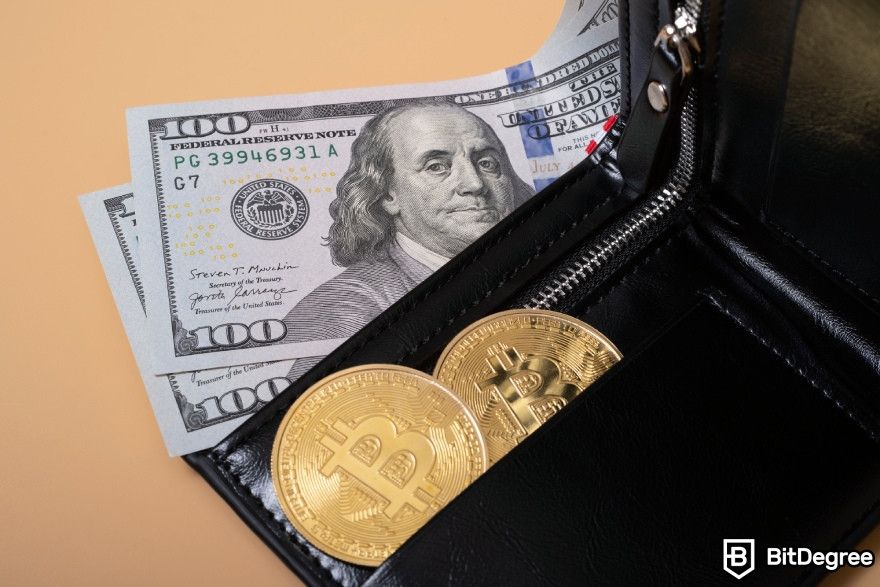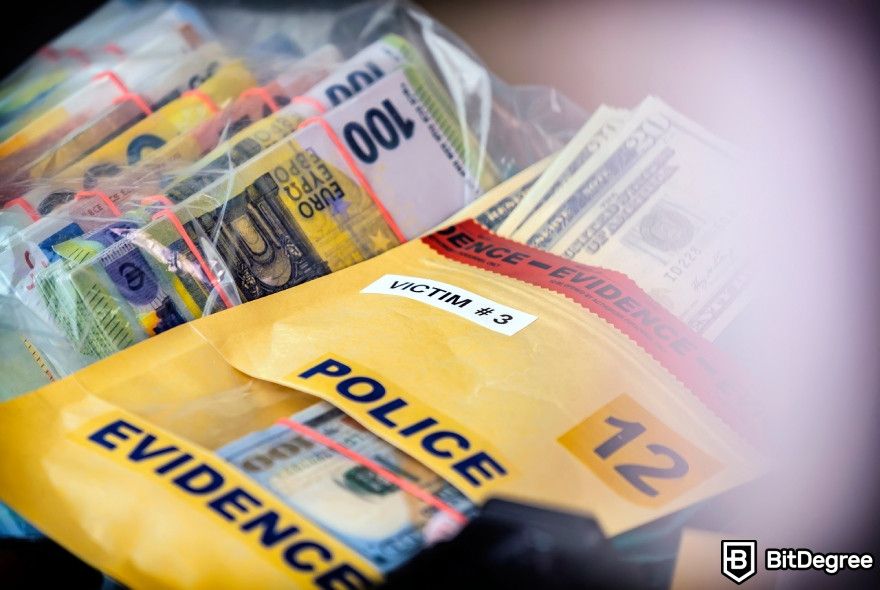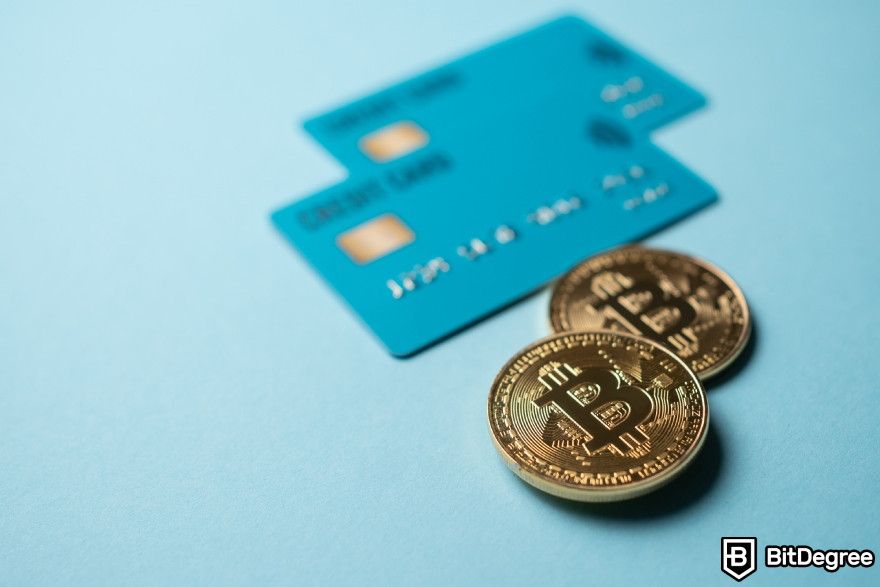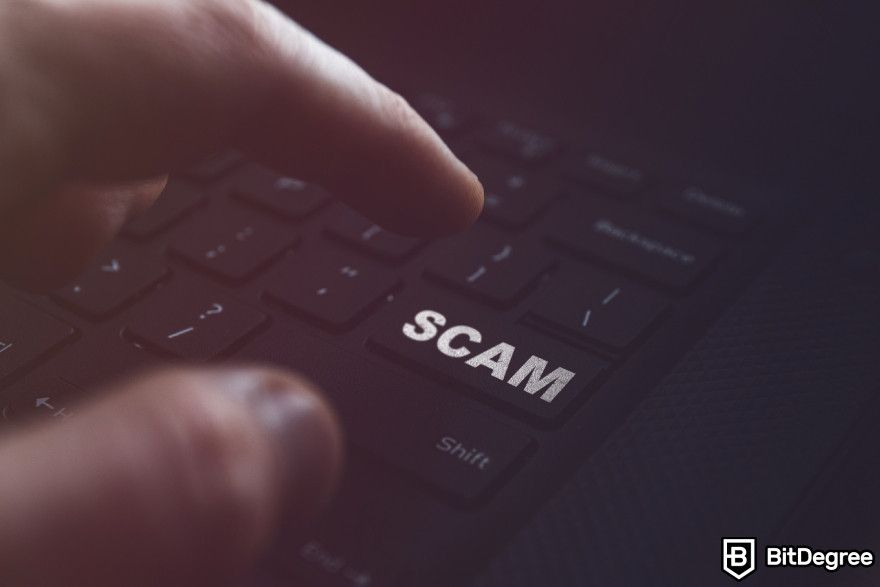Key Takeaways
- Act swiftly by reporting the theft to authorities and notifying relevant platforms to freeze accounts or trace transactions;
- Keep thorough records of the theft, including timestamps, transaction IDs, and any communication with law enforcement or service providers;
- Consider seeking legal advice or assistance to navigate the process of recovering stolen cryptocurrency, especially if the theft involves significant amounts or complex circumstances.
Stop overpaying - start transferring money with Ogvio. Join the waitlist & grab early Rewards NOW! 🎁
There is nothing more devastating than discovering that your digital assets have been stolen. Such an incident can induce panic, paranoia, and, depending on your financial situation, significant distress. Naturally, the violation and severity of this circumstance lead many to ask, "How to recover stolen cryptocurrency?".
While addressing this concern may sound straightforward, it's often more challenging than it appears. However, there are several methods available for those who find themselves facing this predicament. Though, it's crucial to understand that not every theft is identical, which means thatnot every recommendation provided in this guide will be universally effective.
Yet, some approaches of how to recover stolen cryptocurrency can prove fruitful depending on the specific situation. Whether you exclusively utilize non-custodial wallets or engage with wallets linked to exchanges like Binance and Coinbase, I hope my guide will provide you clarity and assistance in navigating such unfortunate events.

Did you know?
Subscribe - We publish new crypto explainer videos every week!
How Do KYC & AML Work in Crypto? (Explained)


Table of Contents
- 1. How to Recover Stolen Cryptocurrency?
- 2. Non-Custodial Wallet Theft
- 2.1. Police Investigations
- 2.2. Hire a Professional Investigator
- 2.3. Contact the Crypto Community
- 2.4. Contact Custodial Services
- 3. Custodial Wallet Theft
- 3.1. Account Hacking or Malicious Entry
- 3.2. Custodial Service Theft
- 3.3. Corporate and dApp Theft
- 4. Scams and Ponzi Schemes
- 5. Conclusions
How to Recover Stolen Cryptocurrency?
The initial thing to grasp when delving into how to recover stolen cryptocurrency is the reality that the odds of succeeding are often low. However, this shouldn't deter you from trying. It's crucial to recognize that, in many cases, the avenues for reclaiming your funds are limited.
Latest Deal Active Right Now:One primary reason for this is the decentralized nature of the crypto industry. In traditional finance, centralized entities can intervene. For example, if someone misuses your credit card, many banks can annul those transactions or offset some of the resultant losses. The same cannot be said about the decentralized finance world.
Many liken the cryptocurrency environment to "The Wild West" due to its fewer protective measures and safety nets, especially when navigating theft recovery. Nonetheless, not every theft is the same, and there are instances where recovery is possible based on the theft's nature.
Therefore, it's essential not to succumb to despair immediately. As the crypto industry continues to evolve, gaining more attention and scrutiny, innovative methods to trace and recover lost cryptocurrency are bound to arise. Our understanding of crypto tracking and criminal patterns is more profound now than ever before, hinting at further advancements in this domain.
Plus, your geographical location can also influence the recovery process. Different countries have varying stances on cryptocurrency, and this can dictate the level of support and resources available. Residents in certain nations might experience higher success rates in recovery endeavors compared to those in others.
Non-Custodial Wallet Theft
Let’s break down this discussion on how to recover stolen cryptocurrency by looking at different types of theft. To kick things off, I will examine non-custodial wallet theft. This is where you use a wallet that you fully control and which you have the private keys for.
Non-custodial wallets are typically considered the safest form of crypto storage, as you never hand power over to a third party (such as an exchange or another institution). However, this does not make them impervious to theft.
There are numerous scenarios where malicious parties can gain access to a non-custodial wallet, giving them the ability to extract money. This can occur through software that records a user’s keystrokes (so as to copy their private key or wallet password), hacking a person’s computer, or finding a physical document or cipher that has the access details recorded.

In particularly unsavory circumstances, non-custodial wallet theft can even happen through simple trickery, where a malicious party creates a convincing website or application and encourages a user to enter their sensitive data into it, believing they are working with a legitimate project. It is for these reasons that non-custodial wallets should not be considered fully theft-proof.
When it comes to how to recover stolen cryptocurrency, the quicker you notice something is wrong and subsequently take action, the higher your chances are of getting your money back. The crux of any recovery operation is to launch an investigation.
Police Investigations
Depending on how much stolen crypto there is, you can contact the police or a law enforcement agency, and inform them of your loss. You will need to document everything that has happened regarding the loss, including how and when you discovered it.
You do not need to give the police access to your wallet to recover lost crypto, but you should definately let them know your public key, the transaction IDs logged on the public ledger which show where and when the money went, and any other information that feels relevant.
If the police take your claim seriously, they may ask to see your computer, so that they can perform digital forensics. This is especially important if they (or you) believe that access was obtained via a hack or malware attack.
The police may be interested in this, not only because identifying the hackers could lead to the money, but because it could help them to find other people’s stolen crypto from the same culprits.

Some malicious software has a unique structure or setup to it, which can help point towards potential criminals. In an age where most web browsers and offline software that is installed by default are constantly scanning for hacks and attacks, it is harder than ever to get malicious software to function on somebody’s computer.
For this reason, many applications of this nature are set up in a strange and unusual way. If they were all made the same, they would get stopped too easily.
If your stolen crypto was actually due to a physical theft, such as somebody stealing documents or even a hardware wallet, then a police investigation might yield even greater results. This is because they can actually isolate a geographic location that relates to it.
For example, if somebody steals your hardware wallet, then they must have been near its original location. At that point, CCTV and surveillance data become useful.
Hire a Professional Investigator
In many regions, the police are slow to act, or simply do not place much significance on stolen crypto. This can stunt or halt the investigation process. However, if you have the money for it, you can hire a professional investigation service to track your crypto. These are people or organizations that are trained to use digital surveillance and forensics to recover stolen cryptocurrency.
This is, in part, possible due to how most cryptocurrencies use public ledgers, meaning they leave markers that point to where the cryptocurrency has been sent to[1].

They, too, might want to access your computer to check for malware or signs of a hacking, although you should be slightly more cautious about granting this, as they are independent third parties, and so they could hack you in the future. This is extremely unlikely, but generally speaking, you should always act with a level of skepticism.
The one major limitation of private investigators that you should know when learning how to recover stolen cryptocurrency is that they cannot enforce anybody to give the money back to you. Even if they discover where the money has gone to, they do not have any power to actually recover lost crypto. To achieve this, you would have to hand this information over to the police, and let them do the rest.
Contact the Crypto Community
Crypto theft is as old as the act of crypto trading. A decade ago, the police did not care and there were no true private investigators to track money down. As a result, crypto communities took matters into their own hands and tried to help each other out as much as possible.
Online forums, such as BitcoinTalk and some subreddits, have sections dedicated to helping people with regard to how to recover stolen cryptocurrency. Some of the people who frequent these spaces are highly skilled programmers and developers, and have an in-depth knowledge of how the crypto space operates.
If you hand over your public key, and highlight the transactions that you did not make, they may be able to find something out for you.

However, when it comes to the online world, trust nobody. It is completely fine to give your public key over, but under no circumstances should you give them your private key. Theoretically, it should be okay to do this if the wallet no longer contains any cryptocurrency whatsoever, but you may still want to avoid this, just in case new money enters the wallet in the future.
Some communities have helped with stolen funds in the past, and while there are no guarantees, it may still be worth a try. Letting online communities know is free to do, and if the right people come to your aid, they could potentially find it. However, just like with a professional investigator, they do not have any ability to return the money to you. The police would be needed, once again, for this.
Contact Custodial Services
In the process of discovering how to recover stolen cryptocurrency, you may find via investigations that your money was sent to a custodial service. Oftentimes, this is an exchange, such as Binance or KuCoin.
If you are working with the police, they may contact these exchanges and let them know what has occurred. If the thieves have left their money on these exchanges, then the money can theoretically get sent back to you by the companies themselves. This is in line with their terms of service, as they forbid any usage that relates to criminal activity.

If you are working with a private investigator or the crypto community, then you may want to contact the exchanges yourself. If you provide them with irrefutable proof, they might send the money back to you.
What if the money was used on an exchange but is no longer there? There's still hope, because custodial services require users to pass KYC, which means that the thieves will likely have used a passport or ID of some sort. Exchanges sometimes contact the police to let them know what has happened.
Custodial Wallet Theft
There are two types of custodial wallet theft: one where your account is hacked or entered by a malicious third party, and the other where the custodian themselves prevents you from accessing your crypto. Both are handled in very different ways and pose different challenges.

Did you know?
Subscribe - We publish new crypto explainer videos every week!
What is Shiba Inu Coin? (Explained with Animations)


Account Hacking or Malicious Entry
Let’s start with the first type of theft. Just like when learning how to recover stolen cryptocurrency from a non-custodial wallet, this form of theft works in a similar way. It is where an attacker either finds your login details for an exchange (such as Coinbase or Kraken) by hacking your computer, or by locating the details written down somewhere physically.
As you likely guessed, the process of how to recover stolen cryptocurrency is largely the same as I mentioned above. Investigation is key, either with the police or with other parties.
Usually, a custodian will step in and help you along the way, but only if they view this to be an issue that relates directly to them, and they do not think it has occurred due to poor safety protocols taken on your behalf.
The amount of money stolen may also influence the likelihood of a custodian stepping in to help you. If it is a large quantity, and you have a long history with the company, then there is a higher chance of them working with you to retrieve the money. If you believe your money was stolen via a pre-paid crypto card, then there might be a higher chance they can help.

This type of theft is very similar to how a lot of fiat credit card fraud happens. Think of scenarios where somebody finds a credit card on the floor, and chooses to use it to either make online purchases or in-store contactless ones. The very same can happen with pre-paid crypto cards. In circumstances like this, you may be in luck, as there are more resources available.
For starters, these types of cards must be facilitated by a payment processor. As of writing, the only two that offer this service are VISA and Mastercard; both of which have a good reputation and are well-versed in loss prevention. If your card is stolen or used maliciously, then they are sometimes able to void any transactions that occur in the face of fraud.
That being said, you would not be directly dealing with them, but rather with the issuer of the card itself, which is likely to be an exchange or crypto ecosystem. Let them know what has happened, and that you have been a victim of theft or fraud. The responsibility is then on them to let the payment processor know and work with them. They may also have a duty to inform law enforcement and launch an investigation on your behalf.
Custodial Service Theft
Some people experience a situation where a custodian takes their crypto away from them or withholds the ability to withdraw or transact with it. This can occur by turning off certain tools within the service or even locking somebody’s account. How to recover stolen cryptocurrency, then? This is a much trickier form of theft to deal with.
Custodial theft is one of the biggest fears in the crypto world. This does not mean that it is common, but rather that the issue cuts to the roots of this industry as a whole. Many people turn to crypto because they are already worried about fiat custodial services unfairly using their money against their will; opting for autonomy via non-custodial wallets and tools.
When a custodial service steals somebody’s crypto, it reinforces this fear of third parties, and reminds the community what this industry is about at its core. From the perspective of the crypto world, such activity is taken as perhaps the greatest offense possible, as it presents the industry as equally as damaging as the traditional financial world.
If your money is stolen from a custodian, then this can take several forms. It could be that the money has simply vanished from your account, or it could be that you can see the money in your account, but the service is preventing you from withdrawing it.

For the latter, it can sometimes be hard to tell the difference between a custodian simply having a network or programming error that it is trying to solve, and them deliberately holding your money against your will.
Well-established companies, such as Binance and Coinbase, are less likely to maliciously hold your money, meaning the chances are that something like this has happened due to programming errors, or because they suspected something insidious or criminal was occurring from your side. However, to some extent, this might still constitute theft, depending on how your country defines the concept.
Most countries define theft in a relatively similar way, with there needing to be some component of depriving the original party of their property, happening in a dishonest way. This depriving does not have to be permanent, so even if a custodian plans to bring back accessibility after a set period of time it might still count. The major issue will be with proving dishonesty, or some malicious intent.
Programming errors are not malicious. They could be viewed as reckless, depending on how they come about, which could change the legal makeup of the situation. Acting recklessly is a type of intention, and in some jurisdictions, it might be enough to constitute theft. But what if a custodian blocks your account because they suspect you are tied to criminal activity?

There is clear intention here, but there might be issues with proving dishonest activity. In many cases, a custodian will do this because something has been flagged against the end user, and so they need to perform their legal duties with regard to KYC and AML.
If the user is not actually associated with criminal activity and can prove this, then the custodian would be on the hook to release the funds. If they do not do this, legal action can typically be taken against them.
There are scenarios where custodians will steal from users in much clearer ways. BlockFi and Celsius Network are two examples of companies that essentially stole crypto from their user base. They did not do it under any pretenses relating to programming errors or duties to KYC and AML. Rather, they simply ran out of money and did not have the appropriate guardrails in place to stop their fallout from affecting their clientele.
These companies found themselves embroiled in various legal investigations, some of which were aimed at restoring the money back to their clients. If this happens to you, then you can theoretically launch a criminal investigation against a custodian.
If you are one of many people affected by a specific company, then sometimes you can join a class action lawsuit. These are not criminal cases, but rather civil in nature. However, the difference is largely unimportant because the outcome is essentially the same: to discover how to find lost cryptocurrency.

- Secure and reliable
- Accepts fiat currencies
- Lots of trading options
- Reputable exchange
- Accepts fiat currencies
- Offers various trading options

- Huge trading variety
- Regulation-compliant around the globe
- Fair trading fees
- Beginner-friendly
- A wide array of features
- Vast number of different crypto coins & tokens

- Beginner-friendly
- Secure
- Decent trading and withdrawal fees
- Crypto.com Visa Card
- Automated tools & bots
- Ecosystem synergy with CRO
Corporate and dApp Theft
The question of how to recover stolen crypto not only relates to end users, but also to larger projects. Custodians occasionally get hacked, as do dApps. The best services will ensure that none of the losses are incurred by their clients, but this is not always the case. Mt Gox is perhaps the greatest crypto theft the industry has seen, and its losses were definitely felt by its community.
Some dApps have been hacked in the past as well, with their liquidity pools being cyphened. This can also affect end users, depending on the situation.
When it comes to how to recover stolen cryptocurrency from dApp hacks, the situation is murkier. If an application is fully decentralized, then there is no single central entity or individual to hold accountable. Responsibility is dispersed across the network, making it challenging to pinpoint liability. Users interact with the platform at their own risk, often with little recourse in the event of vulnerabilities or malfeasance.
The very strength of decentralization, removing central points of control and failure, also means that there's often no centralized party to pursue when things go wrong. As a result, users must exercise even greater due diligence and caution when engaging with decentralized platforms, understanding that the safety nets present in more centralized systems might not exist here.

This does not mean that law enforcement cannot take some action. The US SEC has been grappling with the notion of responsibility in the decentralized world[2], and the current belief is that developers may be held accountable to some extent. This would be the case if developers had some control over the application and acted in a reckless or dishonest way.
However, in many cases, development will be open to all, with ideas getting implemented by community consensus. That being said, if a dApp is found to be a DINO, decentralized in name only, then it could mean developers and creators still have powers that are not appropriately balanced by the communities they foster. In that circumstance, it might be possible for lawsuits to be taken out against these individuals.
When it comes to matters like this, we are largely in unchartered territory, and so it is unclear what would fully happen.
Scams and Ponzi Schemes
Sometimes people ask “how to find lost cryptocurrency?” because they have been a victim to a scam, or a confidence-man type of situation. This is where they may have trusted a person or organization who promised them something beneficial, only to exploit their good faith and naivety.
If the people who did this can be located, then legal action can potentially be initiated against them to recover the stolen funds and hold them accountable for their fraudulent activities.
With the evidence in hand, law enforcement agencies can pursue criminal charges, which could lead to their arrest and prosecution. It is also possible that the discovery of their identity could reveal connections to larger criminal networks, shedding light on other scams or fraudulent activities.

However, the actual recovery of lost cryptocurrency remains challenging, and there is no guarantee of success. Seeking assistance from legal professionals and authorities at the earliest can increase the chances of a favorable resolution.
If the scammers cannot be found, then this gets much harder. Sadly, without a culprit, there may not be a way of retrieving anything, or learning about who caused the harm in the first place.
Typically, if the scam occurred on a wide scale, meaning there were many, many victims and even a few front-facing public figures who represented the project, then there is a higher chance of getting your money back. A primary example of this is the BitConnect scandal– this was a crypto Ponzi scheme that infamously collapsed and led to several legal investigations, and even the returning of funds to some participants.
Conclusions
Learning how to recover stolen cryptocurrency is a complex topic, with a lot of factors to consider. The sad truth is that this process is often extremely hard. It does not mean it's futile to explore how to find lost cryptocurrency, but it does mean that people should be prepared to go through a lengthy (and sometimes unfruitful) journey to regain what is rightfully theirs.
Luckily, as advancements in both investigative methods and technologies are made, as well as further legal and regulatory frameworks are built, recovery is bound to get easier.
Nonetheless, whether the theft incurred at the hands of custodial services (such as those with lower reputations than giants like Binance or Coinbase), or whether it is connected to non-custodial means such as wallet hacks or dApp faults, there are some methods of retrieving assets.
At the end of the day, learning how to recover stolen cryptocurrency is crucial for all, as you can never know when something like this will occur to you.
The content published on this website is not aimed to give any kind of financial, investment, trading, or any other form of advice. BitDegree.org does not endorse or suggest you to buy, sell or hold any kind of cryptocurrency. Before making financial investment decisions, do consult your financial advisor.
Scientific References
1. P. Reynolds, A. S.M. Irwin: 'Tracking Digital Footprints: Anonymity Within the Bitcoin System';
2. Y. Guseva, I. Hutton: 'Regulatory Fragmentation: Investor Reaction to SEC and CFTC Enforcement in Crypto Markets'.









